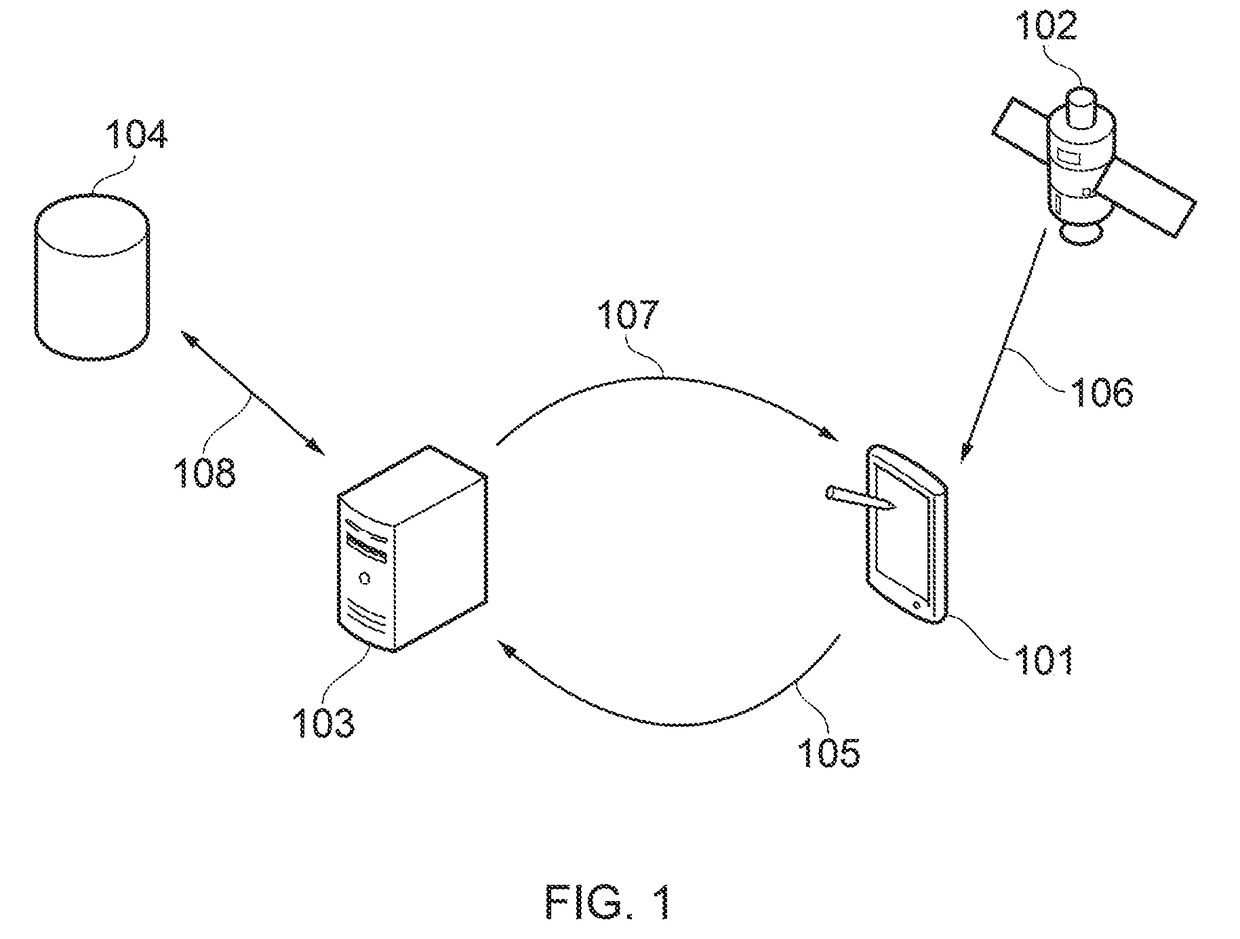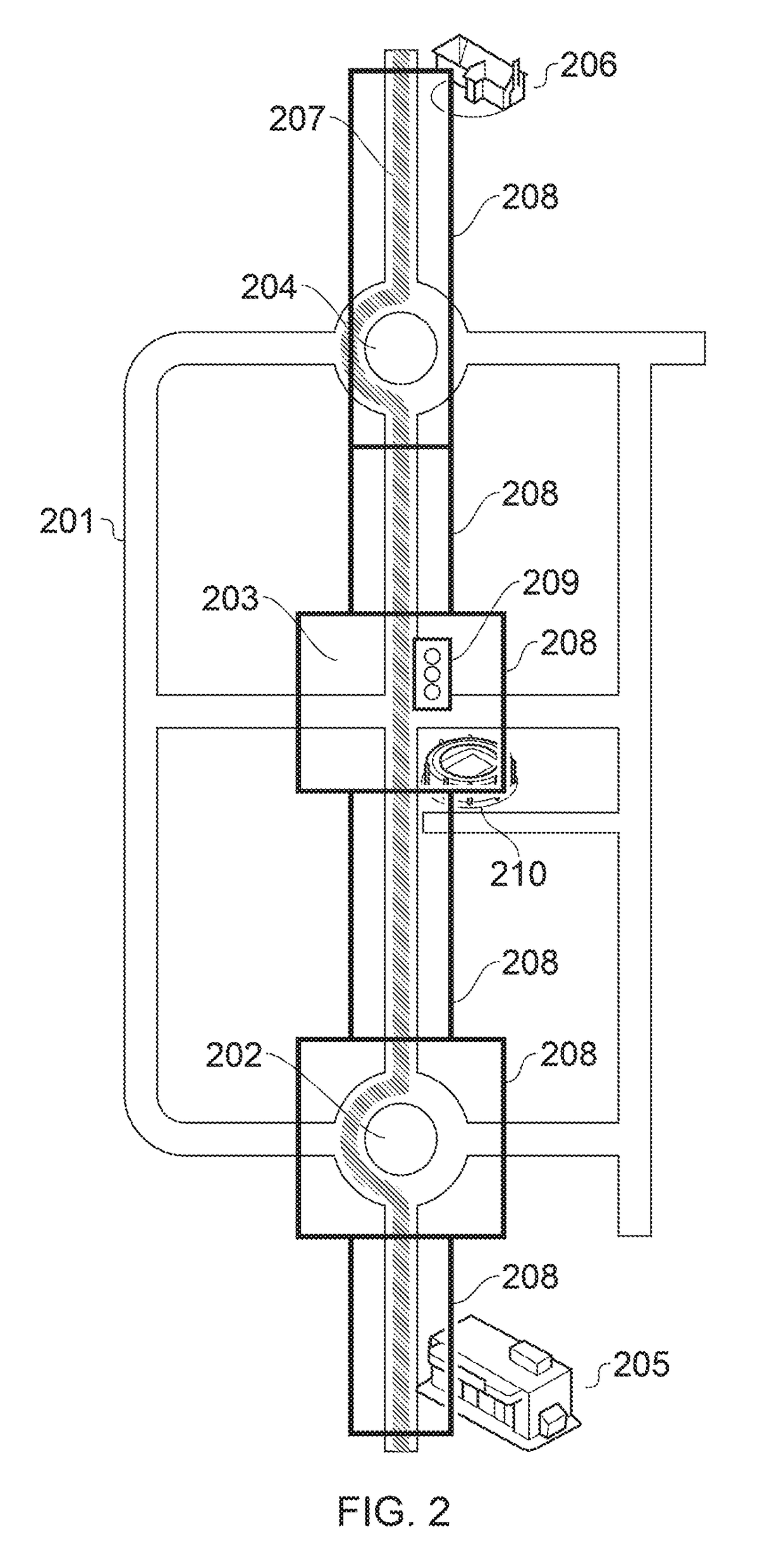Navigation System
- Summary
- Abstract
- Description
- Claims
- Application Information
AI Technical Summary
Benefits of technology
Problems solved by technology
Method used
Image
Examples
Embodiment Construction
[0252]FIG. 1 shows a device 101. The device 101 is able to receive signals from the satellites 102 of a global positioning system. The device 101 is consequently able to determine its position on the earth. The device can do this essentially in real time, and so can determine tracking of its position through periodic measurements of its position.
[0253]The device may be a satellite navigation device (a “sat-nay”), a mobile phone with satellite navigation capability, or another suitably enabled device. The device 101 determines a first route between a start location and an end location using a standard route finding algorithm.
[0254]The first route may be determined by the device 101. The device 101 may run a software application that is able to determine the first route.
[0255]The server 103 determines a second route between the start and end locations which avoids choke points between the start and end locations. Choke points may be areas along the route where there has historically b...
PUM
 Login to View More
Login to View More Abstract
Description
Claims
Application Information
 Login to View More
Login to View More - R&D
- Intellectual Property
- Life Sciences
- Materials
- Tech Scout
- Unparalleled Data Quality
- Higher Quality Content
- 60% Fewer Hallucinations
Browse by: Latest US Patents, China's latest patents, Technical Efficacy Thesaurus, Application Domain, Technology Topic, Popular Technical Reports.
© 2025 PatSnap. All rights reserved.Legal|Privacy policy|Modern Slavery Act Transparency Statement|Sitemap|About US| Contact US: help@patsnap.com



